- Counteroffensive Pro
- Posts
- Inside the Ukraine-U.S. ‘megadeal’ on drones
Inside the Ukraine-U.S. ‘megadeal’ on drones
Zelenskyy said the deal could be worth as much as $30 billion. It would bolster Ukraine’s defense industry while also providing Kyiv with the chance to buy American weaponry.

BLUF: Ukrainian manufacturers have vast experience in drone production, while the U.S. has the funds required to expand Ukraine’s capabilities. A megadeal between the two countries could be hugely advantageous for both. But export control, Chinese components, and bureaucracy in the U.S. are the main challenges for Ukraine now.
The Cabinet of Ministers expanded their program of deregulation on explosive materials.
The Russians are close to creating their own analog of the Baba Yaga heavy bomber drone. Meanwhile, the Ukrainian MoD announced a grant program for startups. Ukr Smart Tech is recruiting manufacturers to create an autonomous interceptor of Shahed drones. And Defence Builder allocated three grants for startups that finished their accelerator program.
Counteroffensive.Pro offers consulting and custom research services. Need talented experts on the ground to answer a due diligence or business question? We’ve got you covered! Email us here!.
THE BIG STORY: What an Ukraine-U.S. megadeal on drones would mean
Despite closely observing the war and its innovations, the U.S. Army only recently announced it would begin equipping all active-duty combat divisions with drones— 1,000 per division, a relative pittance compared to the scale of the drone war in Ukraine.
Ukrainian drones are cheaper than their American counterparts, and they are produced in large quantities with constant improvements based on battlefield applications.
That’s why, according to President Zelenskyy, Ukraine and the U.S. are teaming up for a ‘megadeal’ that could see Kyiv supply drones for the American military.
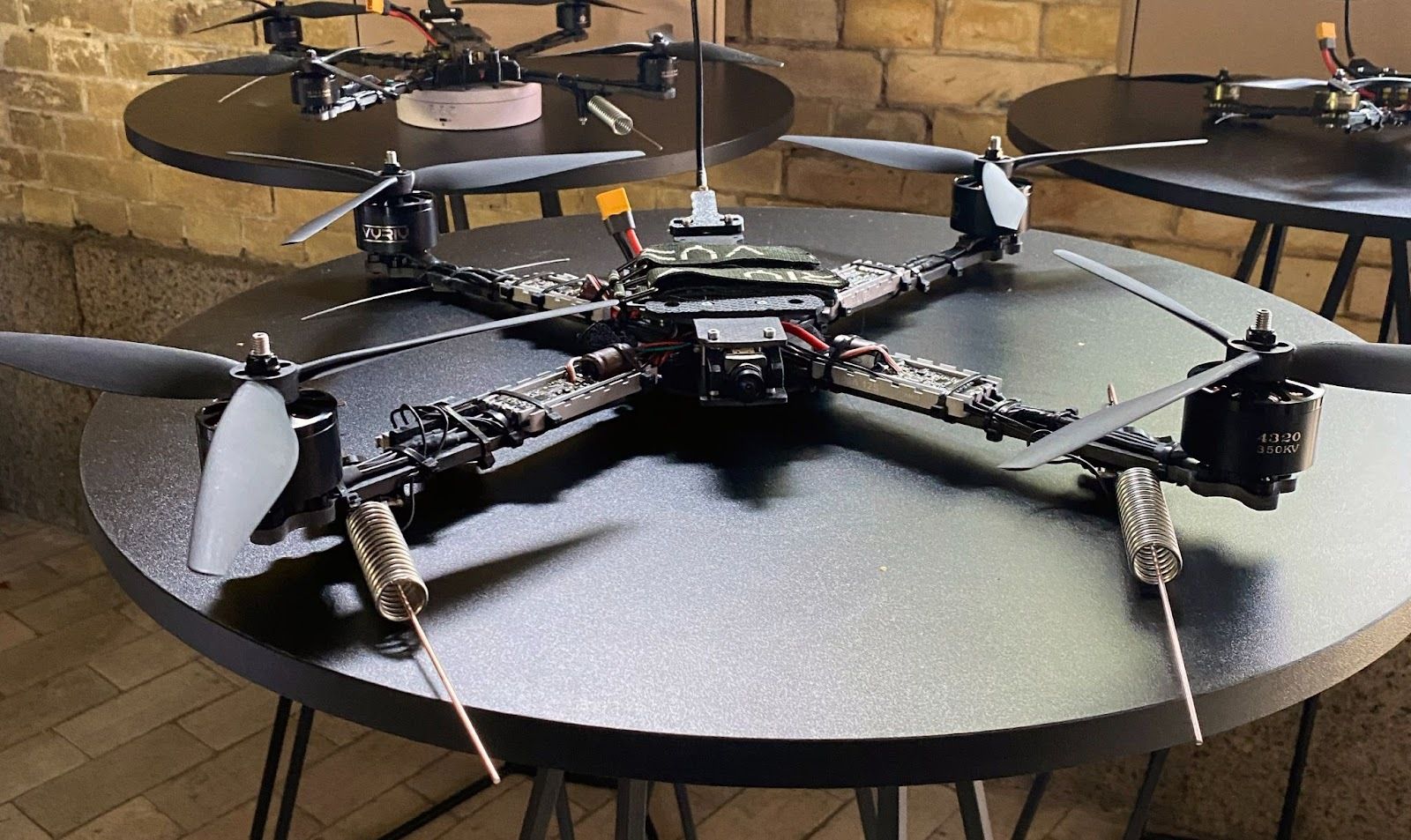
Ukrainian FPV drone. Photo by Counteroffensive.Pro
"With America, with President Trump, we agreed that they will buy drones from us. There is such an agreement... It's very important to prepare this contract for 10-20-30 billion dollars," Zelenskyy said last week.
The U.S. has yet to comment on the deal, but U.S. Defense Secretary Pete Hegseth has said the Pentagon plans to scale up the integration and production capacity of inexpensive drones. He emphasized that the army lacks small drones, which he said are being produced in the millions by “American adversaries.”
“I’m in favor of anything that, number one, helps Ukraine and, number two, accelerates the U.S. Department of Defense’s ability to grow its own drone and counter-drone capabilities,” said Ben Hodges, a retired U.S. Army general who once commanded forces in Europe.
What form the U.S. agreement could take
Apart from President Zelenskyy's words, there are no specifics about how the deal will work, leading some to caution against viewing the transaction as the risk-free win-win it’s been presented as. The office of the U.S. Secretary of Defense declined to comment on what it described as ‘pre-decisional contract awards.’
Five Ukrainian drone manufacturers contacted by Counteroffensive.Pro said they were not part of the negotiations for the deal and could not provide any details. Ukrainian Prime Minister Yulia Svyrydenko suggested the agreement was still in the process of being developed.
"We plan to sign a 'drone deal' with the United States," said Svyrydenko. “We are discussing investments in the expansion of production of Ukrainian drones by the U.S.”
A key challenge for Ukrainian producers is to eliminate Chinese components, said Ihor Fedirko, CEO of the Ukrainian Council of Defence, an advocacy association for defense organizations.
The Council is a part of the negotiation process with the U.S., said Fedirko. However, he declined to give any details about the negotiations or when the deal might be signed due to the sensitivity of the topic.
Ukraine’s Ministry of Defense is also part of the negotiations, a source in the government told us.
“Everything is moving very quickly, and we are seeing a high level of interest in Ukrainian drones from the U.S. and other countries, especially with regard to the export of production technology,” the source said.
An obvious obstacle from Ukraine could be export control. There's no direct export ban, but permits are often denied due to the needs of the military, even when the MoD has no funds to purchase the specific product.
The State Service for Export Control has apparently not been notified of any changes in connection with the drone deal, said Oleg Tsilvik, acting head of the State Service for Export Control. This suggests that it could be some time until we see an agreement.
Ukrainian drones could theoretically be purchased under the American Blue UAS Cleared Drone List of the Defense Innovation Unit, an organization within the U.S. Department of Defense that facilitates the quick adoption of emerging technologies by the military.
The list enables procurement by the DoD and federal agencies without additional security vetting and at a faster pace. But currently no Ukrainian firms are yet on the list.
In February 2025, Ukrainian manufacturer Skyfall, which specializes in heavy bombers, was selected for drone testing, a precursor to being added to the list.
As of March, they were still waiting for Ukrainian government permission to sell drones in the U.S. And since the company hasn’t appeared on the Blue UAS website yet, it’s likely that work is still underway to complete the required verification process.
The company did not respond to a request for comment on the matter.
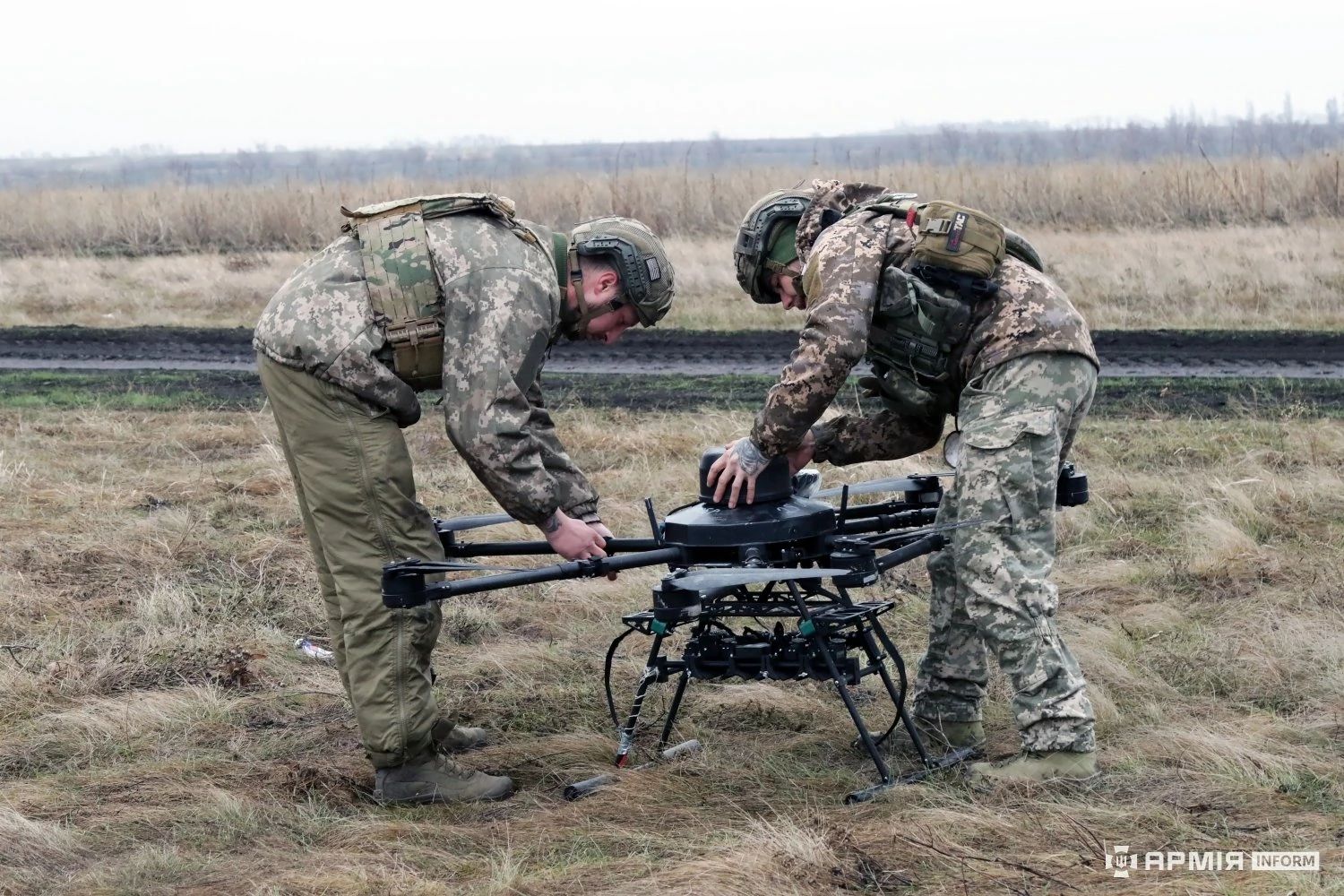
The Vampire heavy bomber. Photo by ArmyInfo
Verification consists of a set of cybersecurity and National Defense Authorization Act requirements that focus on restricting the use of Chinese-made technology and contractors, as well as testing and evaluation.
One thing that is abundantly clear about the deal is that it would be a boon for both sides.
Ukraine’s cash-poor ecosystem is desperate for an influx of American money. The proceeds of any sales could help Ukrainian firms design new and improved weapons and scale up production, driving down the cost of the weapons for all buyers.
“This is an example of a win-win transactional base relationship that is the goal and hallmark of this [U.S.] administration,” said Ori Swed, a professor and drone expert at Texas Tech University.
According to Fedirko, Ukrainian manufacturers will get the following benefits:
access to one of the most powerful markets in the world — the U.S.;
the opportunity to establish joint ventures abroad
access to long-term contracts and financing;
increased export capacity, production stability, and global trust.
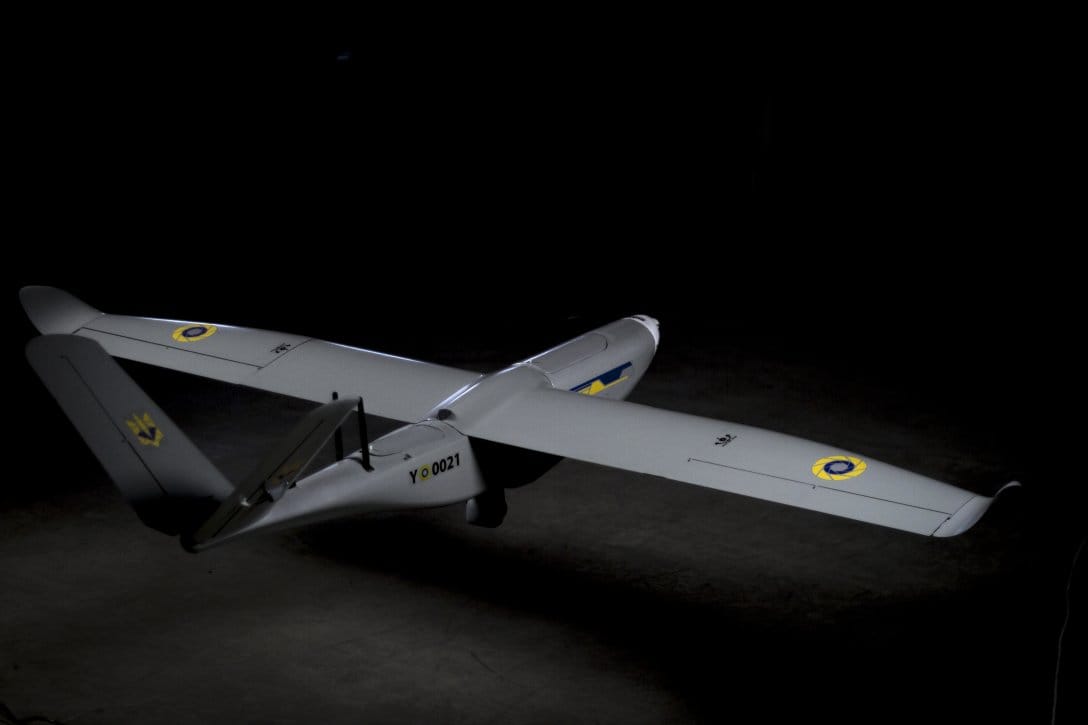
Gor reconnaissance drone. Photo by Airlogix
Risks and obstacles
There are several risks involved in the deal, however. Bureaucratic hurdles in both the U.S. and Ukraine could cause major headaches. In the U.S., it could be even more complicated due to procurement cycles and endless review processes, said Mike Fraietta, co-founder of the New York-based Gargoyle Systems and a counter-drone expert.
For the U.S. military to purchase Ukrainian drones, Ukrainian codification and NATO code aren't enough.
The manufacturer should pass production inspection on safety and working conditions at the enterprise. Additionally, it would need to obtain export and import permits in accordance with U.S. regulations. If the U.S. government funds the supply of Ukrainian drones, the producer would need to comply with the Defense Production Act, emphasized Fedirko.
The Defense Production Act is a Cold War–era law that gives the president significant emergency authority to control domestic industries and allocate orders abroad.
“Currently, we have a huge gap in our understanding of the American market itself: what products and technologies they need, in what volumes, according to what procurement procedures, what requirements for specifications, logistics, and certification,” said Fedirko.
Another risk is a 'hyper-fixation' on Ukrainian products caused by wartime pressure rather than a vision of future theaters of operations, said Dave Deptula, a retired U.S. Air Force general who helped plan the air war over Afghanistan in 2001.
Just because drone warfare is dominant in Ukraine doesn’t mean it will be suitable in every war. In the recent Israeli and Iranian strikes, for example, large-caliber munitions and piloted aircraft were used while small drones stayed on the sidelines due to the conditions of the battlefield.
What would benefit the U.S. military the most isn’t the drones and drone-defenses themselves, Deptula said, but the “process by which the Ukrainians innovate.”
And that process is born of a wartime desperation that American leaders don’t typically feel.
Interested in sponsoring Counteroffensive.Pro? In just several months, we’ve accumulated more than 2,000 subscribers focused on Ukrainian battlefield innovation. This includes Western primes, defense companies, allied governments, and Ukrainian startups. Want your messaging to target this highly-sought-after demographic? Email me here.
BUSINESS LUNCH TOPICS: What our reporting shows!
Russian Innovation Tracker: The development of ‘Baba Yaga’ drones
The Russian army is getting close to the creation of a mass-produced multicopter drone. Recently, Russian media announced the establishment of separate units with heavy drone bombers.
For now, Russia has two analogs to the Ukrainian heavy bombers: the Buran, with a payload of up to 80 kg, and the MiS-35, with a 4.5 kg payload.
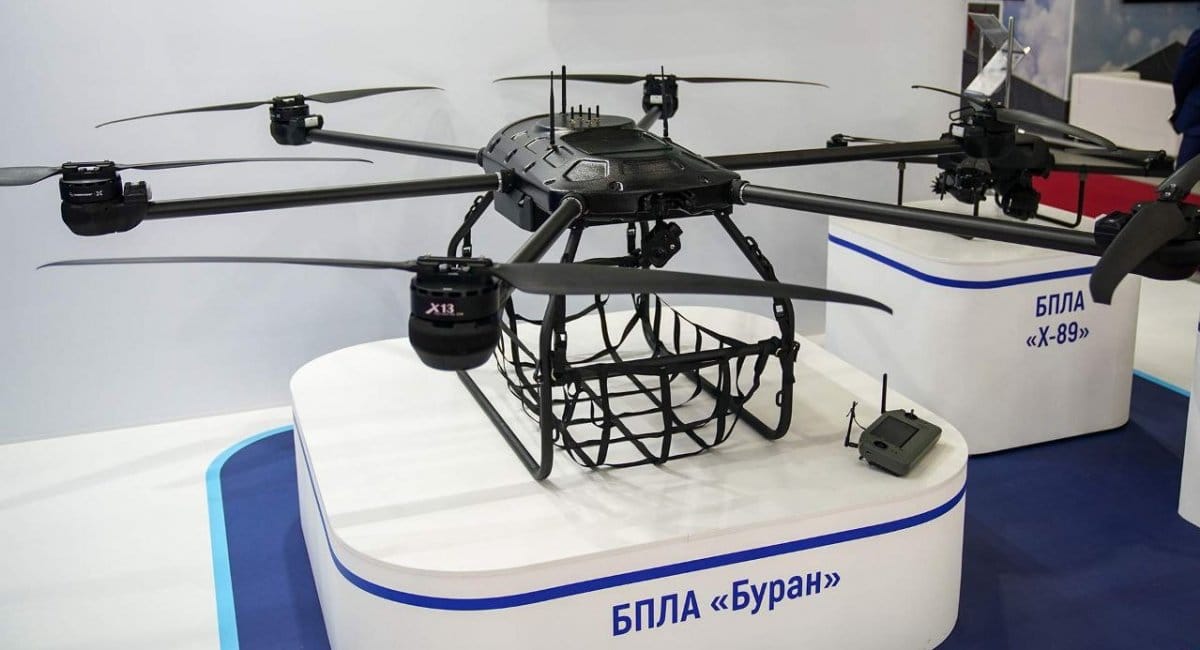
Russian heavy bomber Buran. Photo taken from VPK-News.
The Ukrainian army has been using them for years. Because this drone attacks unexpectedly, and at night, Russians have dubbed such drones ‘Baba Yaga,’ a nod to a supernatural character in Slavic folklore.
"The enemy hasn't created such a system yet, but they're conducting tests. It's absolutely obvious that by the end of 2025, the enemy will have an analog to our Baba Yaga on the front lines," Yurii Fedorenko, commander of Ukraine’s 429th Separate Unmanned Systems Regiment known as Achilles, told Counteroffensive.Pro.
Meanwhile, Russians have had various developments in multirotor drones since 2014, said Andrii, a project manager of drones at FRDM Group, an unmanned drone producer.
"Most likely they'll go for simple mass solutions, but over time they'll modernize both from a technical understanding and tactical application," said Andriy.
For Ukraine to maintain its lead in this class, it must continue working closely with the military and be able to quickly modify drones.
Cabmin expands deregulation for explosive materials
The July deadline was approaching for Resolution #763, which had created experimental conditions for the production, procurement, and supply of ammunition. A new one called Resolution #902 was recently adopted, expanding deregulation to broader areas, according to Tech Forces in UA, an association of over 60 manufacturers.
The expansion covered industrial explosives, hunting powder, and primers for production to meet the Defense Forces' needs.
"The new resolution establishes a unified regime for the period of martial law plus an additional 12 months, which covers the temporary nature of the 'experiment' in Resolution 763," the Tech Force in UA said.
The manufacturers' association is lobbying for explosives deregulation because over 10 members produce explosive materials.
Ukraine's MoD launches K4 grant program for startups
The Ministry of Defense has launched a new grant program, 'K4 Startup Studio,' for Ukrainian military AI startups. Applications from startups will be accepted until August 15th. By the end of next month, ten teams will be selected to receive grants of $250,000.
The main development priorities will be:
Shahed interceptor control systems;
Instant detection and cyber-attack countermeasures;
AI support models for operational-strategic decision-making;
Neutralizing enemy neural networks and disinformation networks.
"We expect the developments to be fully operational by early 2026," the MoD press office said.
Startups will receive four months of mentorship and assistance with military analytics. The MoD will also allocate six months for support teams to find investments and/or conclude procurement contracts.
Defence Builder allocates grants for three promising startups
Ukrainian startups accelerator Defence Builder has selected three teams to receive $30,000.
The winners were:
Strug - developers of an unmanned FPV drone carrier boat with a 240 km range;
Coalas - a team developing a radio control system for operating in electronic warfare environments;
Barvinok-5 - a team developing a digital module project for FPVs.
"The startups that won demonstrated quality performance throughout the entire acceleration period and readiness to scale, found a clear niche in the market, and turned communication into real partnerships," said Kateryna Bezsudna, co-founder and CEO of Defence Builder.

Winners of the second Defence Builder accelerator program. Photo provided by Defence Builder
Ukrainian orders/legislation we’re tracking:
By: Oksana Zabolotna
Changes to the Criminal procedures to reduce legal liability for 'Defence City' participants
Draft Law № 13423 dated 25.06.2025
Why it’s important: Critics warn that these amendments place Defenсe City residents above the law, create conditions for arbitrariness, and may lead to a loss of trust in defense companies by both the Ukrainian public and international partners.
These changes may also lead to decreased interest from Western corporations in providing access to their technologies due to reputational risks associated with cooperating with Ukrainian defense companies in such conditions.
Proposals:
A new article in the Criminal Code exempts Defence City residents from criminal liability for actions taken under a state defense contract if they were necessary, aimed at strengthening defense, socially beneficial, and didn’t endanger lives or the environment. This also applies retroactively to actions during martial law, even before joining Defence City.
During martial law and for three years after its termination, criminal proceedings concerning defense industry enterprises and their officials shall be conducted under special rules. All investigative and prosecutorial actions that restrict the rights of such persons (searches, arrests, etc.) must be approved by the Prosecutor General. If the enterprise is already included in the List, it may request a review of previously applied measures, and current restrictions may be lifted through the court.
Stage:
Submitted for review by the Verkhovna Rada Committee on Law Enforcement.
Initiator:
A group of 119 Members of Parliament from the ‘Servant of the People’ and ‘Holos’ factions, led by Davyd Arakhamia.
What’s next:
After review by the relevant committee, the draft may be considered by Parliament in the first reading.
ON THE MOVE: Professional movement, promotions and industry news.
Know someone in the defense tech space who has made a professional move? Drop us a line at [email protected]!
Kateryna Chernohorenko has resigned as Deputy Minister of Defense for Digital Development. Her next move will be revealed at a later date, according to an aide. Oksana Fedorchuk, former advisor to the MoD, will take Chernohorenko’s place.
The MoD added several new deputy ministers: General Ivan Havriliuk was again appointed first deputy minister after previously holding the same position. The other newly appointed deputies include Serhii Boiev, who was a first deputy prior to Havriliuk, Anna Hvozdiar, ex-deputy minister of Strategic Industries, Volodymyr Zaverukha, ex-first deputy minister of Strategic Industries; and Yurii Myronenko, who was in charge of the Delta system integration.
Payton Ketterman began working at Intelic, an autonomous drone developer, as a validation manager. He was previously a student employee at the same company.
Rustem Umerov has been appointed head of the National Cybersecurity Coordination Center. He also serves as the head of the National Security and Defense Council of Ukraine.
30 SECOND ELEVATOR PITCH:
Rise Technologies Ukraine is a Ukrainian developer and manufacturer of drones and both digital and analog communication systems. The company has created the Yautja reconnaissance drone, capable of operating at distances of 47–50 km, with a flight time of up to one hour and a top speed of 110 km/h.
It claims to be the fastest and longest-range reconnaissance drone of its class developed in Ukraine or in Europe to date. Moreover, it features digital communication that is resistant to electronic warfare.
“We are currently seeking $2.5 million in initial investment to launch mass production. The development is complete, and we now need funding to purchase molds, camera matrices, airframes, and other necessary components,” said Oleksandra Borisova, CEO and co-owner of Rise Technologies Ukraine.
MUST READS:
Ukraine’s Defence Procurement Agency has signed three contracts with interceptor drone producers worth over $72 million.
European defense stocks sank on Monday after the trade deal between the EU and the U.S., which provides for the purchase of American-made weaponry. Renk Group dropped from €70.7 to €65 at its low. As of 2 PM today, they have risen to 68. Thales S.A. dropped from €240 to €231 (now €234).
Russia has opened a new center for manufacturing sea drones on the Kingisepp Machine-Building Plant base. Official Russian media reported that these drones will be used for civilian purposes.
Russians have developed a copy of the Ukrainian Darts-30 kamikaze drone.
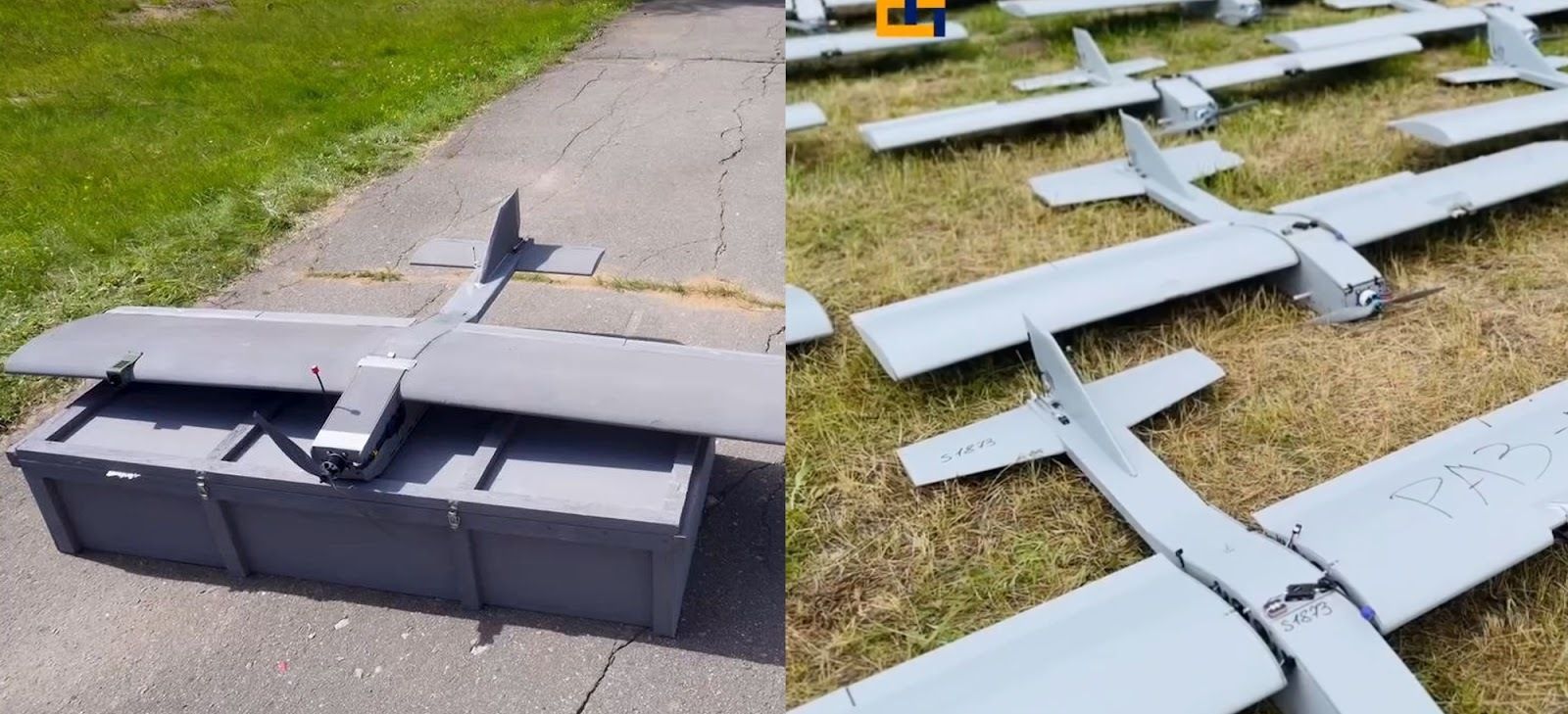
On the left is a Russian kamikaze drone. On the right is the Ukrainian Darts-30. Sources: Russian Telegram channel and Prytula Charity Foundation.
Australia has purchased Ukrainian drone detectors, the Sugar V, developed by Drone Spices and produced by the Gnizdo company.
Russia unveiled the Sturm, a robotic assault system, based on the chassis of a T-72 tank.
Thanks to our media partner:
